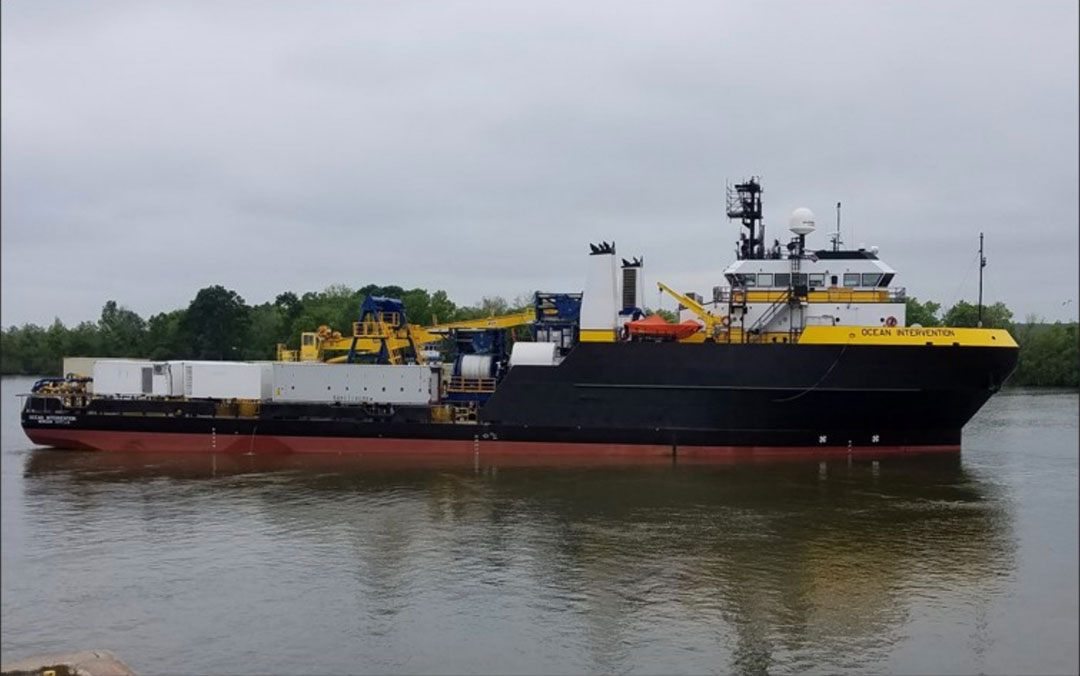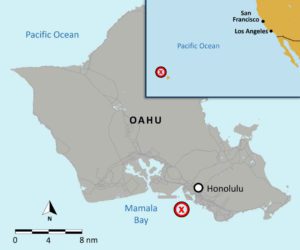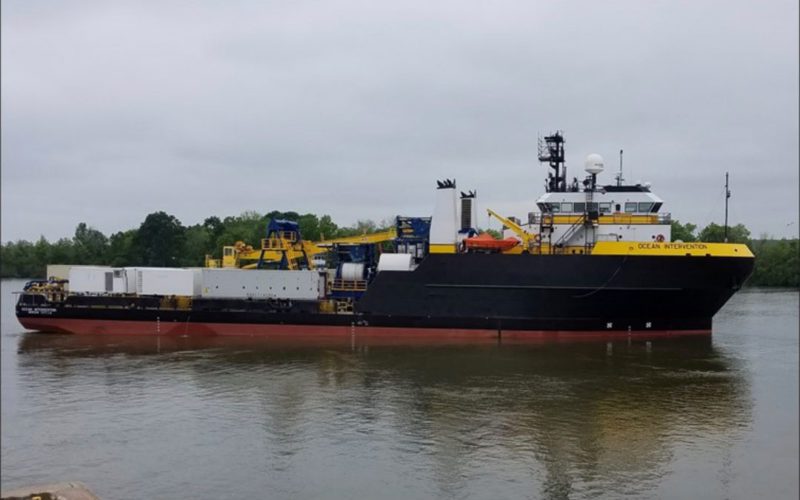
A fire aboard an offshore supply vessel near Hawaii has been traced to a catastrophic mechanical failure on a diesel generator engine, the National Transportation Safety Board (NTSB) said.
Crew aboard the 243-foot Ocean Intervention contained and extinguished the blaze in the engine room before it could spread to other parts of the ship. No injuries were reported among the 16 crewmembers and there was no pollution. Damage to the vessel exceeded $3 million.

Ocean Intervention was anchored in Mamala Bay off Honolulu at 1303 on Dec. 19, 2020, when the fire started. Engineering crews were in the process of troubleshooting the Nos. 1 and 3 generators to understand periodic variations in engine speed, a process known as “hunting.”
The engineers shut off the No. 1 generator during this process and left the No. 3 generator online. Engineers on watch reported hearing “an abnormal sound similar to something heavy dropping on the deck” and then saw black smoke.
“The crew quickly stopped the running engines, isolated all fuel supplies, shut down engine room ventilation systems, and closed the space’s air dampers to effectively starve the fire of fuel and oxygen, which prevented the spread of the fire,” the NTSB accident report said.
At 1518, the fire team reported no signs of fire and that smoke had significantly cleared. Later that evening at 1945, the chief engineer and two firefighters from a responding salvage team entered the engine room and found it clear of danger.
They saw that a damaged connecting rod had been ejected from the crankcase of one of the ship’s two Caterpillar 3516B 16-cylinder diesel engines.
Based on a post-accident forensic investigation conducted by factory-trained representatives, the NTSB said the probable cause of the engine failure was “a cylinder’s connecting rod bearing adhering to the crankshaft, which led to the ejection of the connecting rod and catastrophic damage to the engine.”
According to the NTSB, the forensic report found that “the engine failure sequence began when the No. 1 connecting rod bearing began to adhere to the crankshaft, causing the No. 2 connecting rod bearing to overheat and adhere to the crankshaft as well.”
“As a result, heat began to transfer down to the no. 1 main bearing, causing the bearing to adhere to the crankshaft and thereby spin in the crankshaft bore. As the failure progressed, both pistons contacted the cylinder heads, until the No. 1 connecting rod was pulled from the piston and contacted the crankshaft counterweights and the No. 2 connecting rod. The No. 1 connecting rod was ejected out of the crankcase. The ejection of the connecting rod allowed atomized oil to be released and ignite, starting a fire in the engine room,” the NTSB said.
But the NTSB noted that the investigating technicians were unable to determine the root cause of the failure “due to several unknown preconditions of the engine.”
One possible scenario was that fluid, such as cooling water or fuel oil, entered the cylinder, causing a “loss of clearance on the connecting rod bearing; however, this scenario could not be verified due to damaged components and operational alarms not activating before the failure,” the NTSB said.
Another scenario involves the condition of the connecting rod bearings, which showed signs of cavitation erosion, which the NTSB described as “a degradation of a bearing resulting from vapor-filled cavities in the lubricating oil that may include loss of material, surface deformation, or changes in properties.”
While cavitation erosion is normal in the life of a bearing, cavitation that becomes excessive enough “could have caused the bearings to fail due to increased tolerances between the components and excessive movement outside of these tolerances,” the NTSB said.
Vessel records showed that all maintenance had been completed per manufacturer’s recommendations.
The bearings had been replaced 20,176 operating hours before the failure and were not scheduled to be replaced for another 2,300 hours, the NTSB report said. After the accident, the company told the NTSB that the frequency of inspections for main and connecting rod bearings would be reduced from 21,500 operating hours to between 10,000 and 12,000 hours.
The vessel’s most recent lube analysis report was not available to agency investigators because the package of oil samples was lost in the mail during the investigation period. But the NTSB found reports from July to September showed acceptable results for dilution of the oil by water or fuel.
In an update, the vessel’s operator, Oceaneering International of Houston, told Professional Mariner the missing oil samples had been recovered and “did not show any abnormal signs that would indicate engine failure.”
Darrin McGuire, a senior manager at Oceaneering International, said in an email statement that the company has added prelude pumps to its vessels with Caterpillar 3516 model engines. The pumps provide additional lubrication to engine bearings to avoid dry starts.
McGuire also commended the 16 crewmembers on board: “We are very proud of the quick actions of our vessel crew that day. The crew adhered to their training procedures to ensure that the fire was smothered, and damage minimized.”
Lessons Learned
Engine rooms contain multiple fuel sources as well as mechanical ventilation, making the spaces especially vulnerable to rapidly spreading fires. The crew of the Ocean Intervention effectively contained the spread of a fire by removing fuel and oxygen sources.
Vessel crews should familiarize themselves and train frequently on machinery, fuel oil, lube oil, and ventilation shutoff systems to quickly act to contain and suppress engine room fires before they can spread to other spaces and/or cause a loss of propulsion and electrical power.
— NTSB

